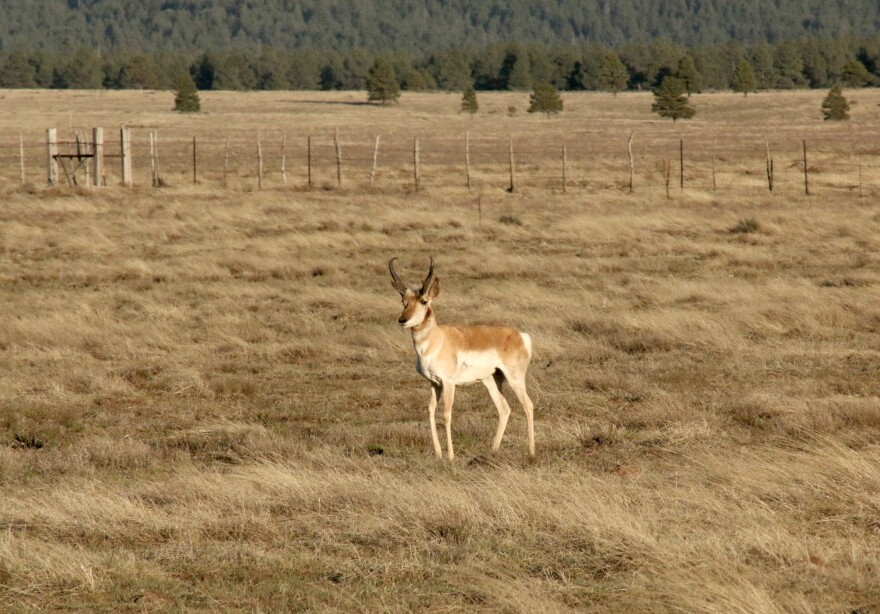Pronghorn used to roam widely in northern Arizona. But European settlement dramatically altered the open grasslands on which pronghorn depend, reducing the population of these graceful deer-like creatures. Today, conservation organizations are working to help pronghorn—by lessening the impact of the fences that now crisscross the land.
Fences fracture pronghorn habitat. Though they are one of Earth’s fastest land animals, pronghorn don’t like to jump. When they encounter a fence, they get through by going under it. Many fences are made of barbed wire and are too low for pronghorn to go under, so the animal’s attempt to cross a fence can lead to injury or death.
But it’s possible to modify fences to make them more pronghorn friendly. The U.S. Forest Service now has a standard: all new fences on national forests in pronghorn habitat must have a smooth bottom wire at least 18 inches off the ground. This height is a compromise; it’s the minimum height pronghorn need to get through, but it’s higher than ranchers would prefer for keeping calves inside their fences.
Plenty of existing fences pre-date that standard and need to be adapted. Volunteers work with the Coconino National Forest in the Verde Valley, and the Grand Canyon Trust in House Rock Valley, to modify problematic fences and remove unneeded ones. The Arizona Antelope Foundation also rallies helpers to work on fences on national forests and private ranchlands. These organizations could always use more willing hands to wrangle barbed wire and improve pronghorn habitat, fenceline by fenceline.
This Earth Note was written by Erica Rackley and produced by KNAU and the Sustainable Communities Program at Northern Arizona University.






